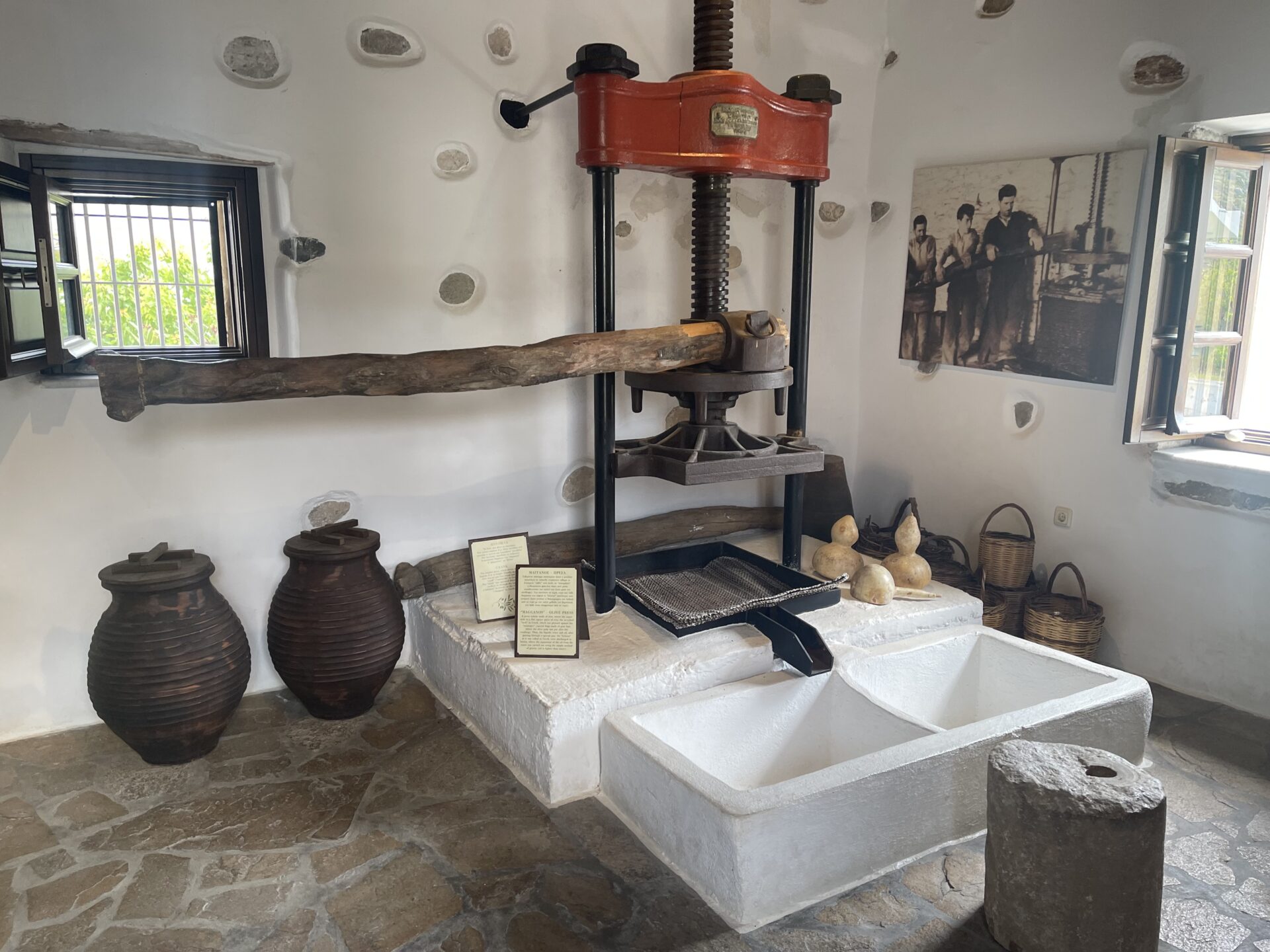This article has partner links that I may receive compensation from at no cost to you. Thank you for supporting my site by using them!
Naxos, Greece, is famous for its agricultural products. Unlike most Greek islands primarily focused on the sea, the size of the rich interior of Naxos means the island produces things found nowhere else in Greece, such as unique cheeses and the liqueur known as Kitron. In addition to these items, Naxos also produces Greek staples such as olive oil. The Eggares Olive Oil Museum in Naxos tells the history of olive oil production on the island and hosts tastings filled with local products at their shop.
Naxos Olive Oil Museum
The Eggares Olive Oil Museum is a popular stop on Naxos tours. I visited as part of a half-day tour that included other local historic sites. You can also stop in if you are exploring the island on your own. It’s located in northern Naxos in the small town of Eggares. The museum is open daily from April to October. Entry is free.
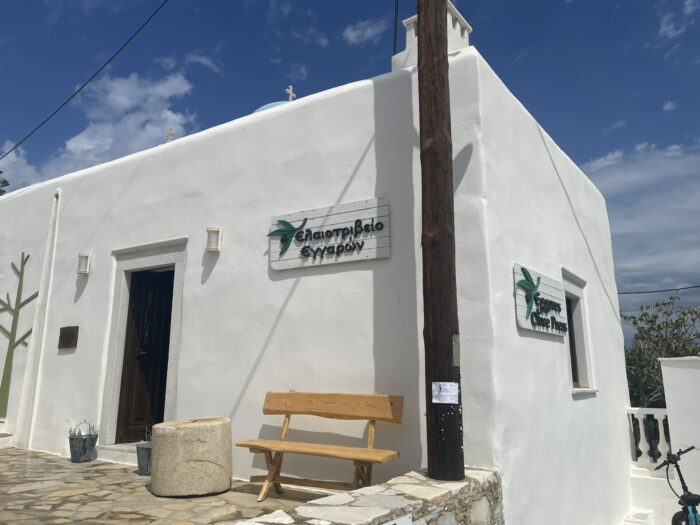
The Olive Oil Museum (website) is a small place. Our tour guide told us about the history of olive oil production in Naxos, but there were also a few informational signs and historical photos of people using the various tools.
It used to be that each village in Naxos would have its own olive oil press. Nowadays, there are 5 modern olive presses on the island, so production has been consolidated. The press in Eggares was used until 1963. It first started operation in 1884.
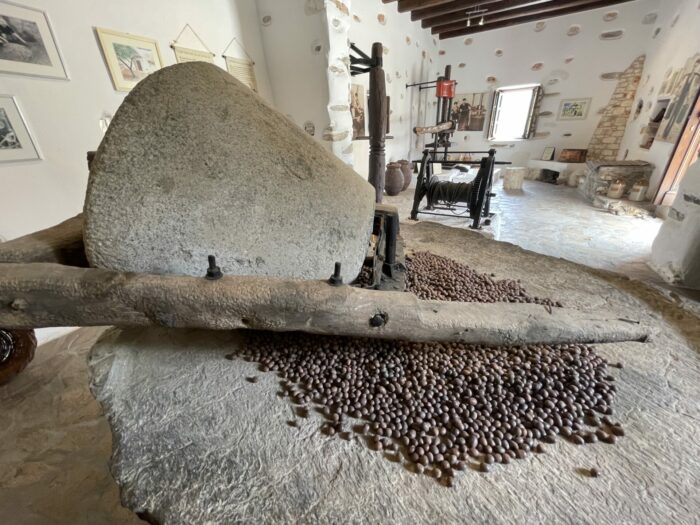
Ancient Greeks viewed olives as gifts from the Gods. Olive oil wasn’t just used for cooking. Athletes were anointed with olive oil. Especially Popeye.
Book your hotel in Naxos now!This traditional olive press is a fairly simple setup; however, it’s still a group effort. The process started with this millstone that required multiple people to operate.

The pulp would then be taken from the millstone and put into goat hair bags. The bags were made from goat hair because it doesn’t absorb any of the oil.
The next step of the traditional olive oil making process involves the press itself. Boiling water was used to help separate the oil from the pulp.
There is a trough with two parts. One section gets both water and oil poured through it. Then, a hole in the bottom allows the water to flow into the second part, leaving just the oil. Remember how you learned about oil & water separating in science class? That’s exactly how the process works.

Gourds were then used to scoop out the finished olive oil. The remaining parts of the olives then got used as fertilizer or fed to pigs, a tradition that continues today.
As with many places in Naxos, a cat is in charge of the facility.

Olive Oil Tasting in Naxos
After learning about production at the Eggares Olive Press Museum, I headed into the shop for a tasting.

The shop sells olive oil, olives, and various other products made from olives.

Like the museum, tastings are free, but of course, you will likely want to buy something like I did.
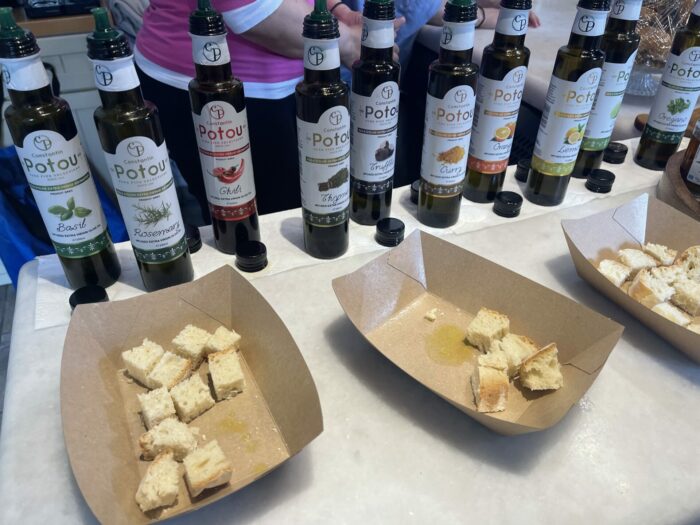
One of my favorite items was the olive oil cake.

They even sell olive oil ice cream. I had never tasted olive oil ice cream before, so I had to get it. It was delicious.
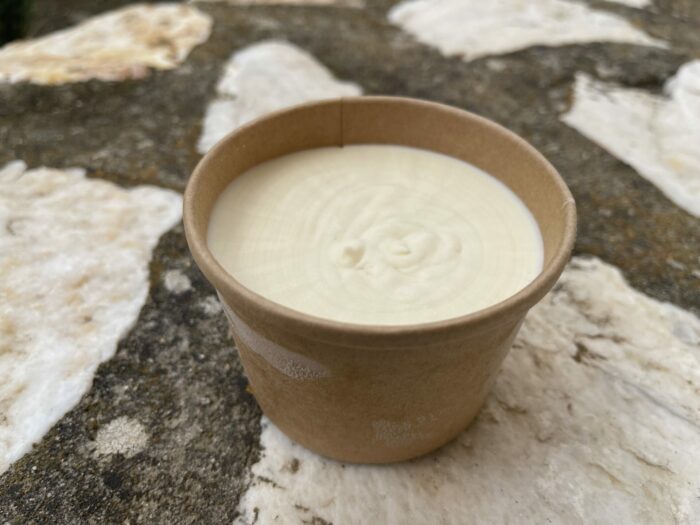
The Naxos Olive Oil Museum is a unique way to get closer to the island’s agriculture. It doesn’t take long to visit, so be sure to take a detour or go on a tour that includes it as a stop.
Learn about the best cocktail bars in Naxos. There are also a couple of places to drink craft beer in Naxos.
Here are some great Naxos tours & activities & other things to see & do in Naxos.
If you’re looking for a place to stay in Naxos, check out these hotels. For more restaurant recommendations, go here.

